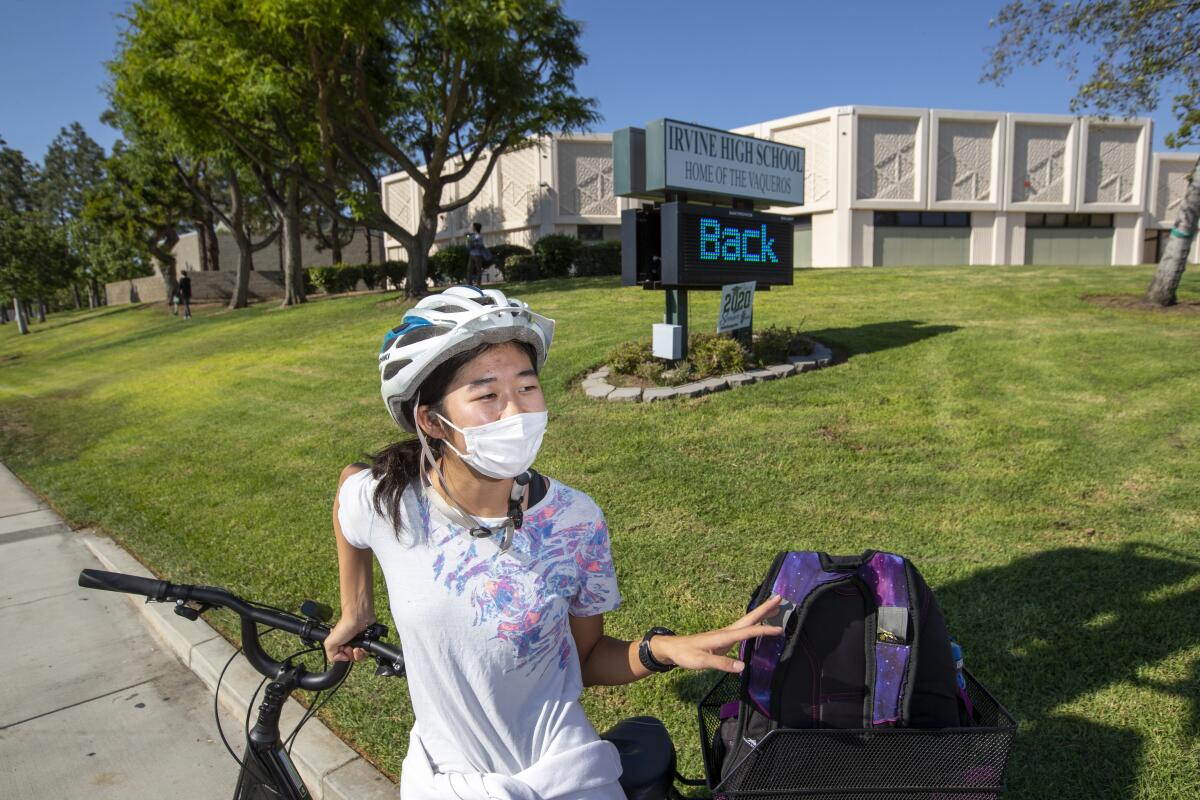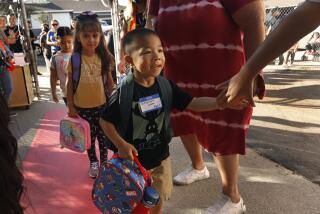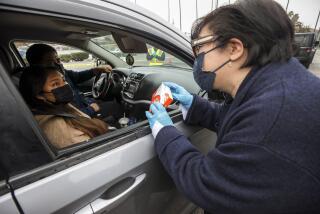The unequal pace of school reopenings is exacerbating California’s educational inequity

- Share via
In Irvine, about two-thirds of the school district’s students are back in classrooms, at least to some extent. Others have opted to continue learning remotely. In the elementary schools, families in the Irvine Unified School District have a choice for in-person learning: regular attendance five days a week or a hybrid model for limited hours two days a week. Secondary school students get eight hours a week on campus if they choose. Physical classes are about half their usual size, with masks, plexiglass partitions and other safety measures in place.
In Santa Ana, the city next door, there is no in-person instruction. School officials are hoping they might be able to open classrooms next month, but just for their youngest students.
There’s a reason for this stark difference. Though Santa Ana’s population is 25% bigger than Irvine’s, it’s had six times as many COVID-19 cases and more than 20 times as many deaths from the disease. That’s hardly coincidence: Eighty percent of Santa Ana’s students are poor enough to qualify for free or reduced-price lunches. That’s four times the poverty rate of Irvine students. And low-income areas have more crowded housing conditions and more people who work at essential jobs, where they are more likely to be exposed to infection.
People have been talking about educational inequity for decades, but nothing has etched its outlines as sharply as the pandemic. When schools closed last spring, disadvantaged students were less likely to have the computers and broadband connections needed to log in to virtual classes, as well as parents who knew how to navigate this new world of remote learning. Now, income could be the determining factor in whether students get to attend school at all.
The good news is that, for all the stories about outbreaks at reopened schools, almost all of these so far have involved a couple of students and/or staff. No one has created a consistent definition for the intimidating word “outbreak,” so it has often come to mean “more than one case.” We have little idea at this point how many of those infected people brought the virus into their schools from outside and how many were infected at school.
California has taken a cautious approach overall to reopening and has been rewarded with no signs of a related increase in COVID-19 cases, according to Mark Ghaly, the state’s secretary of health and human services. Properly handled, in-person learning appears much less dangerous to our health than we’d feared.
But Los Angeles County is still in the high-danger “purple zone” category; reopenings are at this point limited to 30 waivers a week countywide for prekindergarten through second grade only. The slow buildup is important; opening schools in a large-scale way in an area with a high percentage of positive COVID tests is an almost sure way to introduce the virus onto campuses.
Still, it’s hard to see the scientific reasoning behind some of the county’s plans. In September, the Public Health Department announced that schools could bring in limited numbers of English language learners and students with disabilities, regardless of age or grade level. Its heart was in the right place ― these are among the students who have been harmed the most by remote learning ― but that’s an educational decision, not a public health matter. The agency should decide what’s safest and then leave it to schools to decide what’s sound educationally.
As for the waivers to reopen classes for the youngest students, the department’s plan gives preference to schools with the most underserved student populations ― again, a right-minded idea. But the plan also requires the waivers to be granted evenly across the supervisorial districts, which has everything to do with politics and nothing to do with health considerations or where the most need is. It’s even more problematic that the county is requiring that unions and parent organizations sign off on any reopening plans.
Los Angeles Unified, by far the largest school district in the county, isn’t participating in the waiver plan. It’s waiting for community infection rates to be low enough to allow for a safe return while also developing its own safety measures, including an ambitious testing and tracing program.
Here’s one more driver of inequity: the wide health disparity between well-off and low-income neighborhoods. Unlike, say, the Irvine Unified School District, L.A. Unified encompasses many neighborhoods with COVID-19 rates high enough to threaten reopening efforts.
The California Constitution guarantees all students a free and public education of reasonably good quality. When some neighborhoods are allowed to suffer far more than others during a pandemic, we are required to recognize that systemic inequality is also robbing too many Californians of that all-important right to learn.
More to Read
A cure for the common opinion
Get thought-provoking perspectives with our weekly newsletter.
You may occasionally receive promotional content from the Los Angeles Times.









